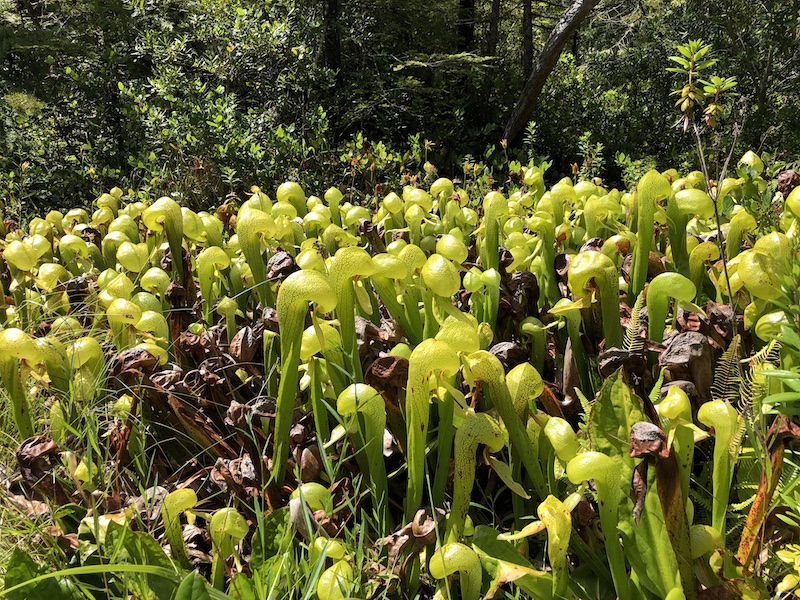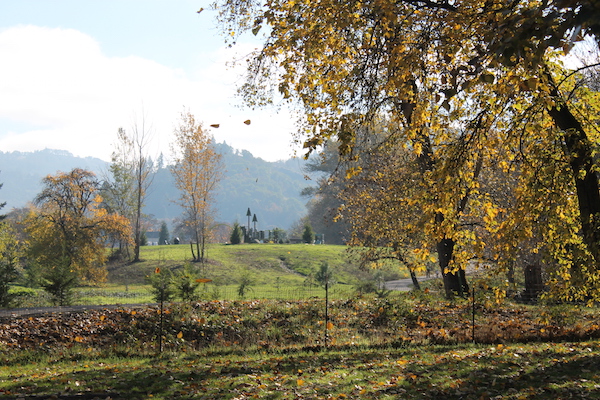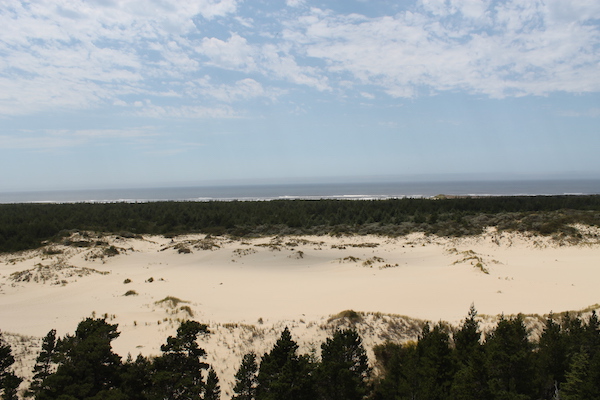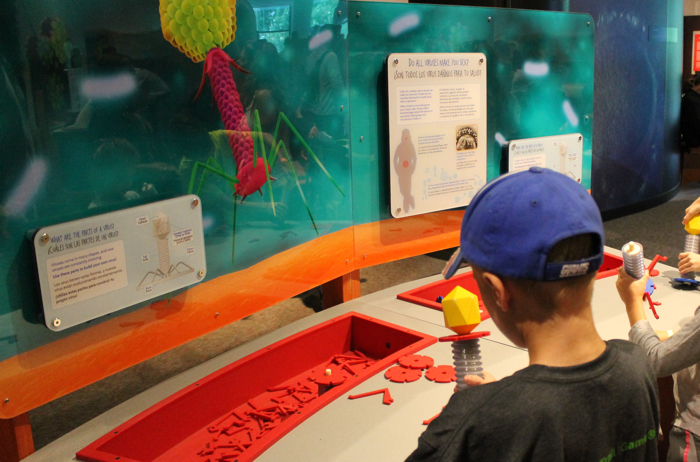Darlingtonia State Natural Site is a state park and botanical preserve located five miles north of Florence, Oregon, United States on U.S. Route 101, just west of Mercer Lake and south of Sutton Lake that is dedicated to the preservation of a rare plant. (source: Wikipedia)
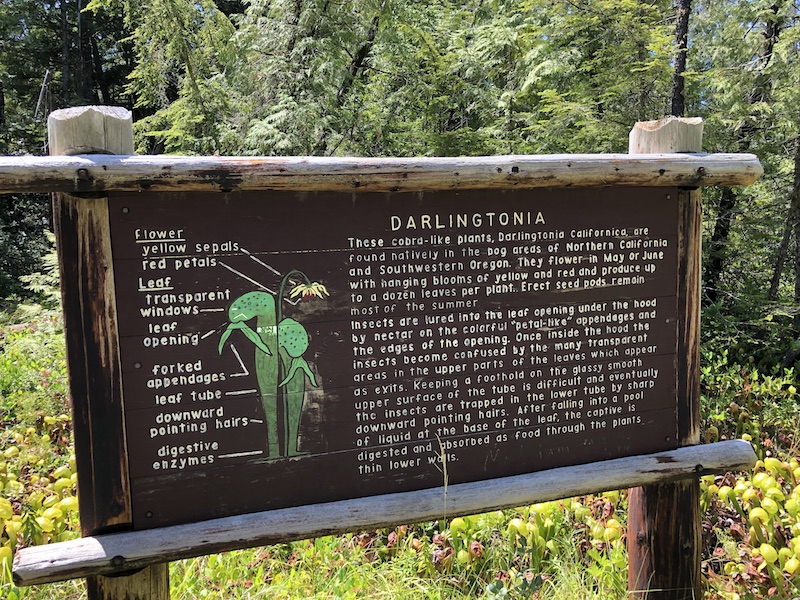
Like something out of an IKEA catalog, the Darlingtonia plant is brightly colored, oddly shaped, and has a foreign-sounding name. Having passed the telltale brown sign for the Darlingtonia wayside countless times on Oregon coast road trips, it took a pandemic and a need for outdoor dining to “lure” us in. And like the plant, the site is bigger and more impressive than it initially looks.
Where to Stay
Find family-friendly accommodations in Florence, Oregon from traditional hotels to private vacation rentals through Stay22.com:
Between Wikipedia and the above interpretive sign, my knowledge of the Darlingtonia plant is that is carnivorous, earning the nickname cobra lily. Using nectar on appendages that look like snake fangs, the plant attracts insects into the leaf opening located under the bulbar transparent head; a trap that eventually confuses and tires the prey down a tube lined with downward pointing hairs and ending in a pool of digestive enzymes. Inside the tube, larvae, mites, and bacteria digest the insects, excreting nutrients that are absorbed by the plant (this video explains the process in better detail).
Native to Northern California and only growing in California and Oregon, Darlingtonia plants need a fen to survive. Think of a fen like a wetland area that is a hybrid between a bog and a peatland but fed by small streams and groundwater. Ferns, tall grasses, and sedges thrive in fens, as does Darlingtonia californica.
Beyond a shady and quiet place to enjoy a picnic lunch (or fast food during a global pandemic – let’s be real), the Darlingtonia State Natural Site offers visitors an opportunity to experience and appreciate nature and our fragile ecosystem. Plenty of picnic tables are available; including some that are tucked back into bifurcated side paths perfect for curious children needing to stretch their imaginations and legs.
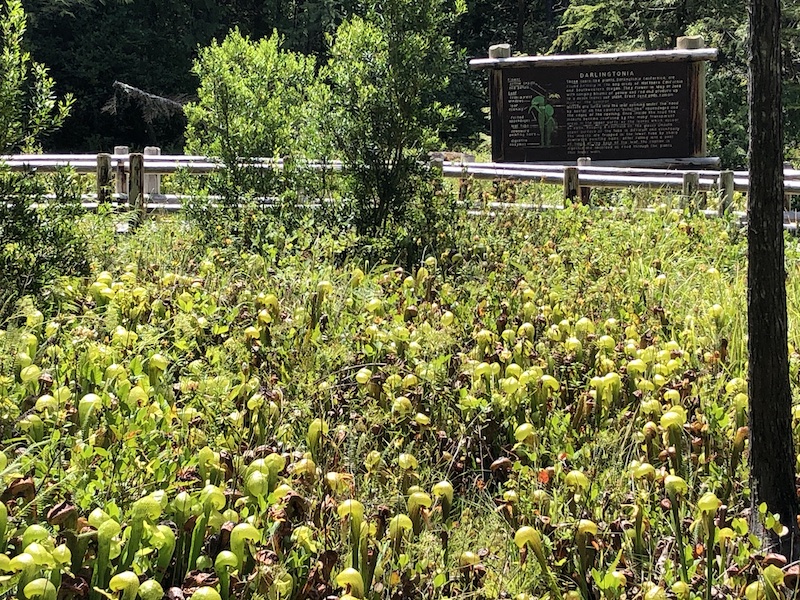
The wayside visit should take 10-15 minutes on a combination loop of paved paths (stroller and walker manageable, with assistance) and wooden boardwalks. Blooming in May/June, our early August visit did not capture the experience in full magnitude. However, both free and interesting, the attraction is worth a stop.
Happy trails!

